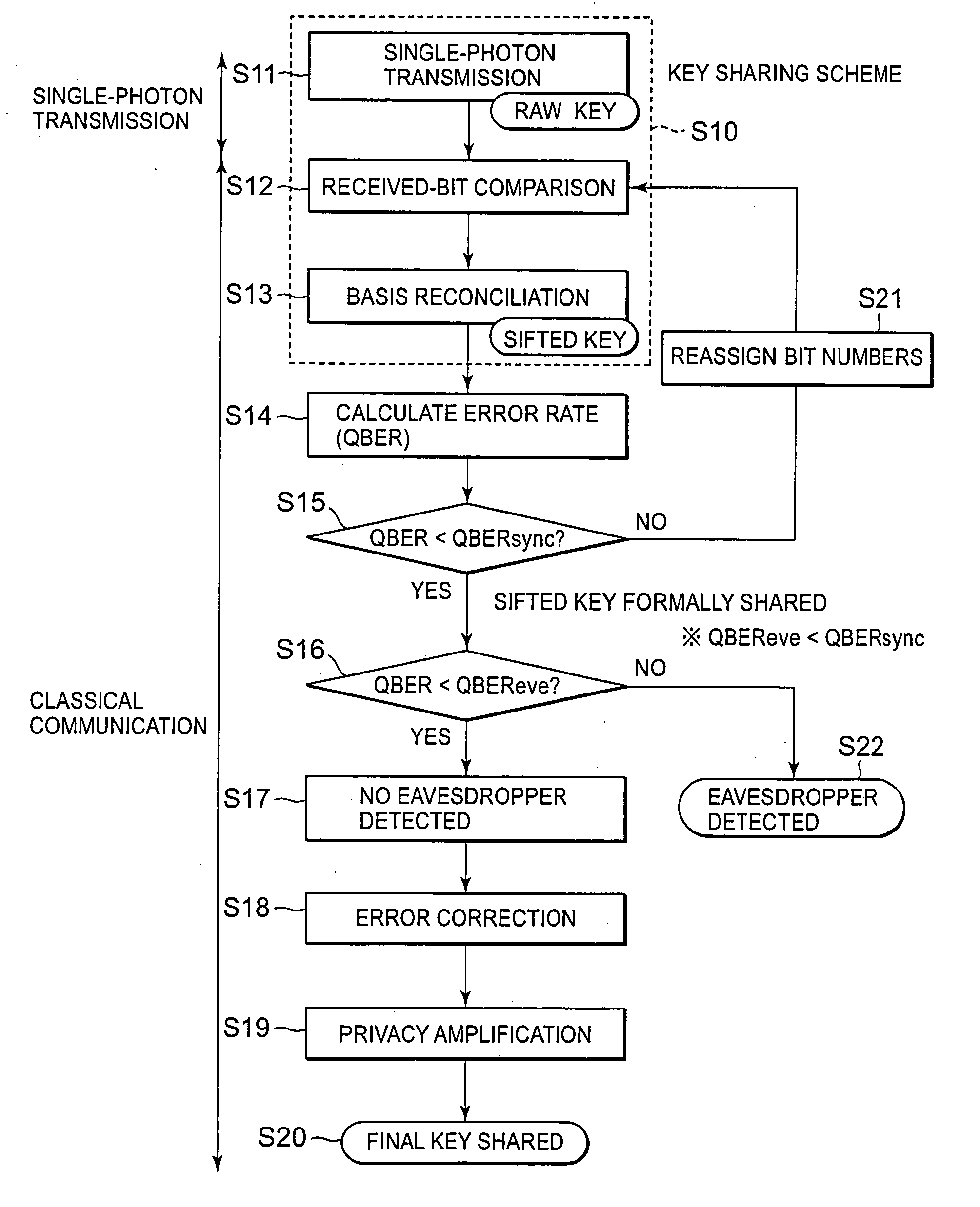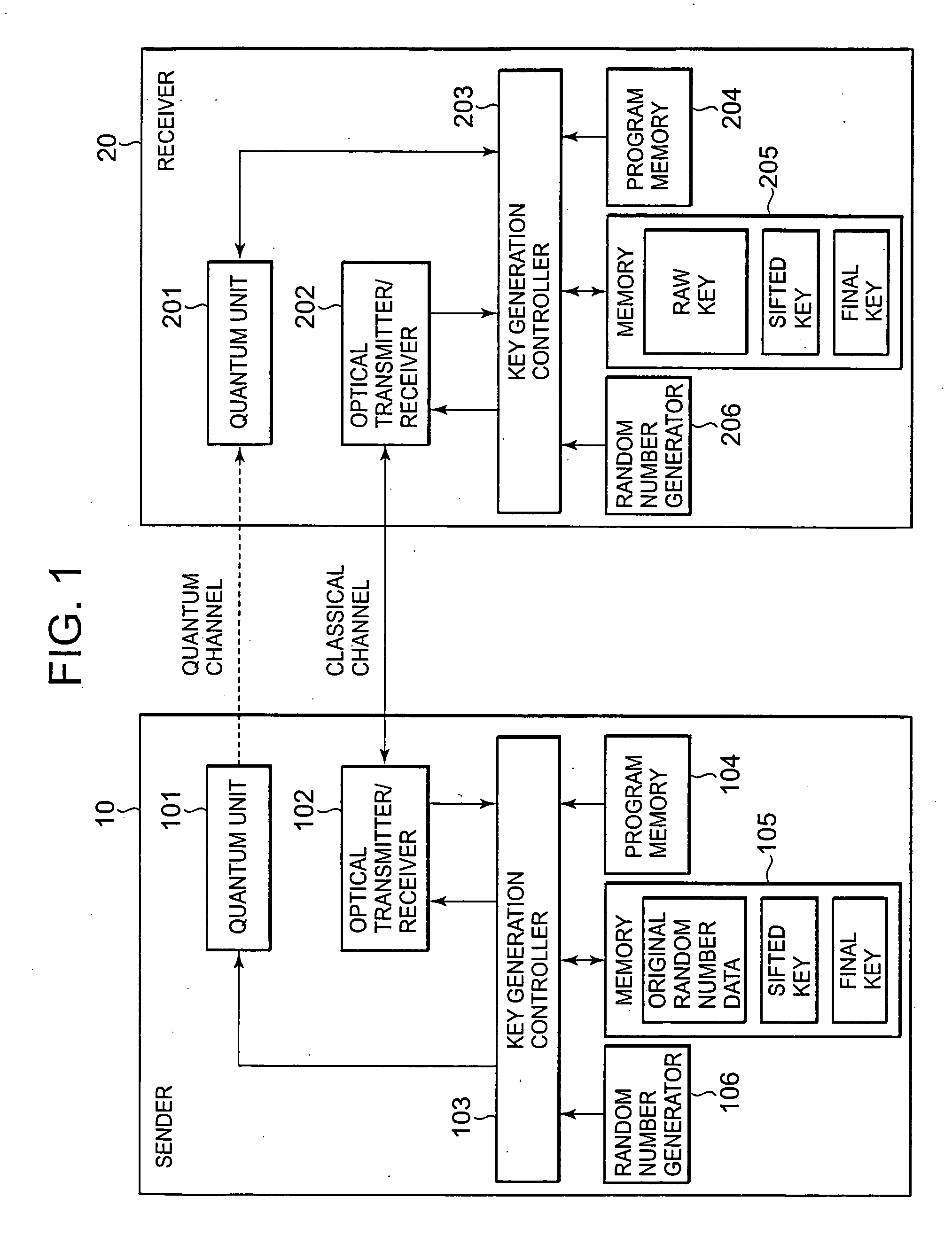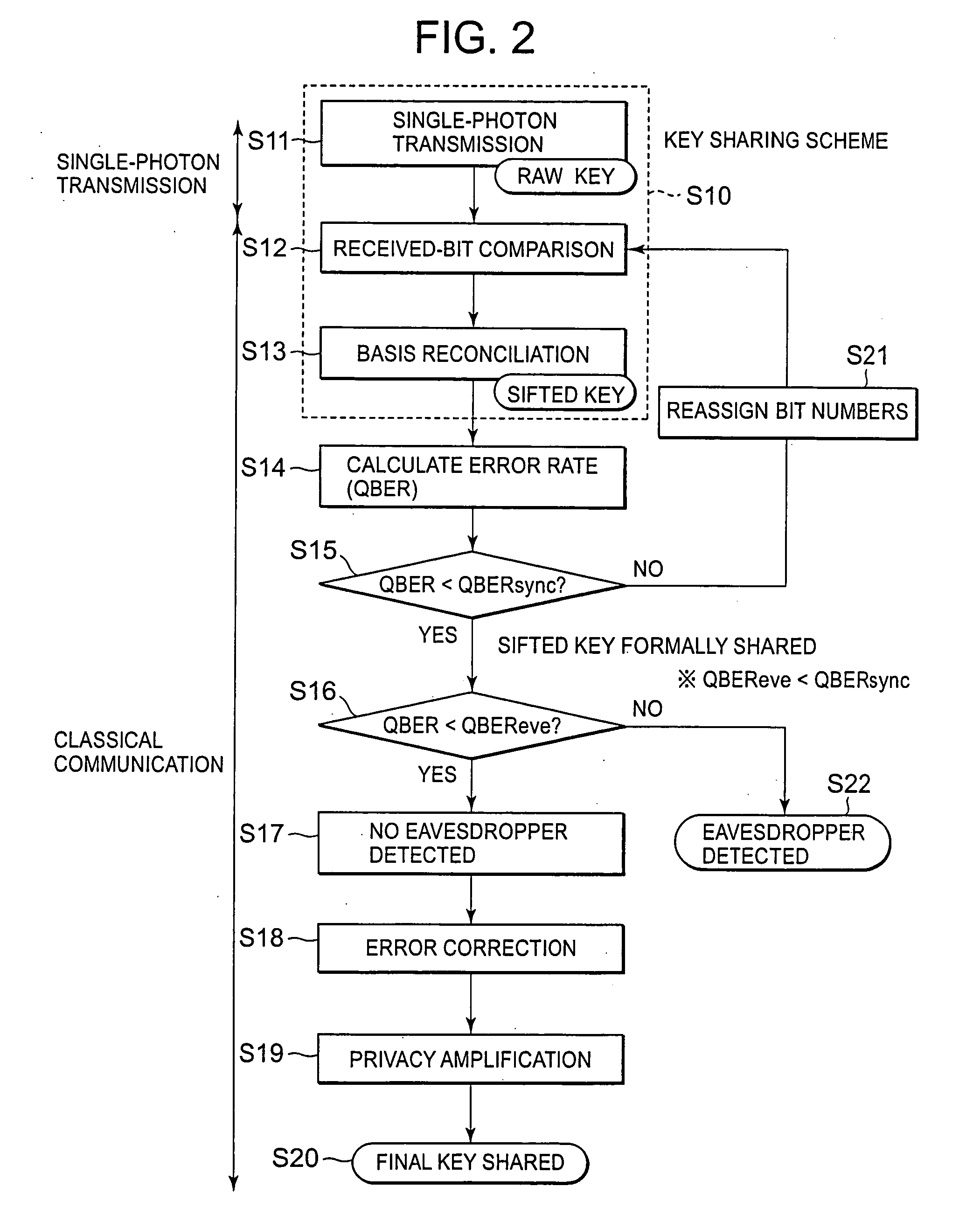Method and system for generating shared information
a technology of shared information and information, applied in the field of communication systems, can solve the problems of loss of synchronization of bits, large error rate of reception data, and significant degraded common-key generation efficiency, and achieve the effect of stable and fast key generation ra
- Summary
- Abstract
- Description
- Claims
- Application Information
AI Technical Summary
Benefits of technology
Problems solved by technology
Method used
Image
Examples
first embodiment
1. First Embodiment
(System Configuration)
[0034]FIG. 1 is a block diagram showing a configuration of a quantum key distribution system according to a first embodiment of the present invention. Referring to FIG. 1, the quantum key distribution system includes a sender 10 and receiver 20, which are connected by a quantum channel and a classical channel. Here, the quantum channel is a communication channel in a state where the optical power for transmission from the sender 10 to the receiver 20 is very weak, at the level of at most one photon per bit, whereas the classical channel is a communication channel in a range of optical power that is used in usual (conventional or usually used) optical communication.
[0035] The sender 10 is provided with a quantum unit 101 for single-photon transmission and an optical transmitter / receiver 102 for usual optical communication. The quantum unit 101 and the optical transmitter / receiver 102 are controlled by a key generation controller 103 that ex...
second embodiment
2. Second Embodiment
[0068] In the first embodiment, as described above, when QBER≧QBERsync in the step S15 in FIG. 2, it is determined that bit position synchronization is not established, and a notification to that effect (NG) is sent from the sender 10 to the receiver 20. Then, the bit number reassignment step S21 is performed on the receiver side. As another method, it is possible to perform this bit number reassignment step S21 on the sender side.
[0069]FIG. 10 is a sequence diagram showing operations for sifted key settlement according to a second embodiment of the present invention. The general flow in the second embodiment is as described in conjunction with FIG. 2, and therefore a detailed description thereof will be omitted.
[0070] First, when a raw key is generated on the receiver side by single-photon transmission (step S11 in FIG. 2), the receiver 20 sends received-bit numbers assigned to the bits of the raw key, which were able to be received, and basis information corr...
third embodiment
3. Third Embodiment
[0073] The quantum units 101 and 102 for single-photon transmission and the optical transmitters / receivers 102 and 202 for usual optical communication in FIG. 1 are not limited to a specific scheme. Hereinafter, as a preferred embodiment, a quantum key distribution system in plug and play scheme will be described. The plug and play scheme is regarded as one of the promising schemes for putting the polarization-sensitive quantum key distribution systems to practical use, because the plug and play scheme can compensate polarization fluctuations occurring over an optical fiber transmission line.
[0074]FIG. 11 is a block diagram showing a configuration of a quantum key distribution system in the plug and play scheme according to a third embodiment of the present invention. The quantum key distribution system according to this embodiment includes a sender 10, a receiver 20, a sender-side wavelength multiplexer / demultiplexer 30, and a receiver-side wavelength multiplexe...
PUM
 Login to View More
Login to View More Abstract
Description
Claims
Application Information
 Login to View More
Login to View More - R&D
- Intellectual Property
- Life Sciences
- Materials
- Tech Scout
- Unparalleled Data Quality
- Higher Quality Content
- 60% Fewer Hallucinations
Browse by: Latest US Patents, China's latest patents, Technical Efficacy Thesaurus, Application Domain, Technology Topic, Popular Technical Reports.
© 2025 PatSnap. All rights reserved.Legal|Privacy policy|Modern Slavery Act Transparency Statement|Sitemap|About US| Contact US: help@patsnap.com



